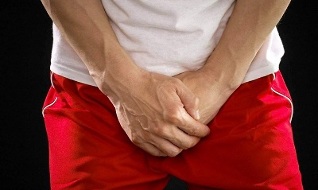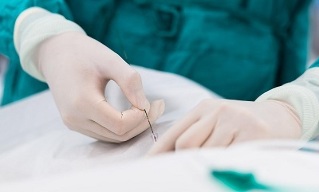Against the background of the influence of various factors, the venous vessels in the pelvic region can undergo deformation, which leads to impaired blood flow with corresponding consequences. With age, the risk of developing pathological changes increases. Varicose veins of the small pelvis in men can be disguised under the guise of certain diseases, for example, varicocele or hemorrhoids. With minimal symptoms, conservative treatment is possible; advanced cases require surgical intervention.
Characteristics of the disease
When it comes to varicose veins of the small pelvis (VVVMT), changes in the architectonics of the vessels and the presence of venous congestion are implied. Pathology is also called in medicine the syndrome of chronic pelvic pain, the syndrome of venous congestion.

The peculiarity of BPHMT is that it is quite difficult to diagnose it in the early stages. Varicose veins are formed due to the development of insufficiency of the venous valves and the occurrence of congestion, which is the result of blockage (partial or complete) of the venous bed, compression of the vessels and deterioration of their tone.
According to statistics, deformation of the veins of the male genital organs is somewhat less common than varicose veins of the small pelvis in women.
Violation can manifest itself as:
- chronic prostatitis;
- varicocele (recurrent, bilateral);
- veno-occlusive erectile dysfunction;
- hemorrhoids (internal / external);
- varicose veins of the lower extremities;
- combinations of the listed pathologies.
Inaccurate diagnosis of a patient's condition can lead to difficulties in treatment, while the risk of relapse increases significantly.
Factors provoking the disease
Many patients have hereditary vascular problems. Weak vessels require more attention to their own health. Otherwise, varicose veins of the pelvic vessels are not excluded. Also, pathology can be acquired in nature.
In general, the disease is caused by:
- Vascular disorders (portal hypertension, May-Turner syndrome, arteriovenous conflicts).
- Connective tissue dysplasia.
- Formation of neoplasms.
- Behavioral habits (low physical activity, abuse of junk food, lack of regular sexual intercourse, excessive physical exertion).
Genetic predisposition to varicose veins does not mean its development yet. The likelihood of venous damage is significantly reduced if a man prefers a healthy lifestyle.
Classification
There are 3 degrees of varicose veins of the small pelvis, which occurs in men.
Determination of the stage depends on the indicators of the diameter of the affected vessels:
- for grade 1 BPHMT, this value is maximum 0. 5 cm;
- 2 degree of pathology is accompanied by an increase in vein diameter up to 1 cm;
- in the transition to stage 3, the indicator is more than 1 cm.
Based on the origin, the disease is classified into primary (congenital) and secondary.
Symptoms
Clinical manifestations of VVMT in men at the initial stages are not detected.
If there is no treatment for a long time, symptoms develop in the form of:
- painful sensations in the lower abdomen and perineum;
- increased pain after exercise, during sex and during bowel movements (if the patient is constipated);
- swelling of the scrotum and perineum;
- dysuric disorders (urination disorders).
Discomfort often increases when a person changes body position. With VVMT, pain radiates to the lower back or thigh. The more affected the veins, the higher the likelihood of developing dysuria.
Diagnostics

Several diagnostic methods are provided:
- TRUSI;
- Ultrasonography of the pelvic veins;
- dopplerography;
- pharmacocavernosography (PCG).
Also, the patient needs to undergo coagulogram and spermogram. If you suspect a sexually transmitted disease, PCR diagnostics are performed.
To accurately determine the disease, the patient must be examined by an andrologist and phlebologist.
Treatment of ERVMT in men
If the symptoms are not noticeable with the affected veins, the doctor may prescribe a prophylactic course therapy with mandatory monitoring of the patient's condition.
Use is prescribed:
- phlebotonics (synthetic, plant-based);
- anticoagulants;
- vitamins;
- non-steroidal anti-inflammatory drugs (for painful discomfort).
Conservative methods are also recommended for elderly patients, especially in the absence of severe symptoms.
The drugs selected by the doctor help to strengthen the vascular walls and improve hemodynamic parameters.
Methods of Surgical Treatment
When the disease progresses over a long period and is accompanied by various unpleasant symptoms, a decision is made to carry out surgical treatment. When choosing the method of surgical intervention, the specialist takes into account the age category of the patient, his state of health and the presence of concomitant pathologies.
Surgery, in particular endovascular surgery, is indicated for patients with:
- intense clinical manifestations;
- bilateral varicocele (recurrent nature);
- varicose veins of the prostate;
- compression of the iliac veins.
In addition, the violation can be eliminated with the help of angioplasty, stenting, vascular embolization.
Folk remedies
Traditional medicine can be used to relieve symptoms and speed up the recovery of affected veins. However, you should not use natural medicines without first consulting your doctor.
List of Potential Recipes:

- Chopped ginger (4 tablespoons) and lemon zest are poured with boiling water (1 liter). After cooling, honey is added to the infusion (2-3 tbsp. L. ). The drink is used instead of tea.
- Horse chestnut (200 g) is crushed and filled with vodka (1 l). The product is infused for 7 days in a dark place. Recommended dosage: 10 drops 3-4 times a day for a month.
- Chopped oak, willow and chestnut branches (1 tbsp each) are poured into a saucepan, poured with boiling water (1 l) and placed on low heat. Half an hour after boiling, the broth is removed from the stove and cooled. Further, chamomile, string, dried cress and St. John's wort (1 tbsp each) are added to it. The infusion period is 12 hours. A little honey should be added to the strained drug.
Dosage regimen for the decoction: the first 2 days - 3 times 50 ml, the next 2 days - 100 ml, then the dosage is increased to 150 ml. The duration of therapy is 20 days, after which a break is made for 10 days.
To improve the condition of blood vessels, it is useful to consume blueberries daily, as well as pollen.
When using folk remedies, it is important to understand that they only complement the main course, so it is undesirable to refuse medications prescribed by a doctor.
Prognosis and possible complications
The most favorable prognosis of treatment will be at the initial stages of VVMT. If the disease develops for a long time, accompanied by characteristic symptoms, it will often be possible to cope with it only with the help of surgical intervention.
Thanks to medication, you can ease the discomfort caused by deformation of the veins, as well as reduce the risk of unwanted consequences.
Patients should be aware that even surgery does not guarantee the absence of relapses. If the man continues to lead the old way of life, most likely, the disease will return.
In other words, good results from treatment can be expected when:
- timely completion of therapy;
- strict adherence to medical recommendations;
- behavioral correction.
If the venous vessels of the small pelvis are affected by varicose veins, the patient runs the risk of getting:
- infertility;
- deterioration of spermatogenesis indices;
- diffuse changes in the prostate parenchyma;
- erectile dysfunction.
Due to vascular deformation, the likelihood of thrombus formation and their migration, thromboembolism up to vein rupture with massive hemorrhage increases. Such complications are fatal for the patient (occur in 5% of cases).
Preventive measures
In order for the stronger sex to avoid venous damage and the above consequences, you should regularly engage in prevention.
Follow these simple rules to protect yourself from an unpleasant illness:
- Nicotine seriously damages blood vessels and the body as a whole, so smoking should be quit forever. Alcohol consumption should be minimized or eliminated.
- One of the most common factors provoking VVMT is a sedentary lifestyle. It is necessary to avoid a long stay in a static position, more often get out for walks. Office workers who are forced to constantly sit at the computer, it is useful to periodically warm up.
- An important item in the list of recommendations is nutritional correction. Doctors always advise to exclude harmful products from the menu, giving up overeating. The food consumed should be rich in vitamins, minerals and many other valuable substances, thanks to which the vessels remain strong and elastic.
- It is worth refraining from excessive physical exertion.
- Regular sexual intercourse without interrupted sexual intercourse has a positive effect on blood vessels.
- If a man underwent surgery, he must wear compression hosiery without fail. Medical underwear is selected taking into account certain parameters. In addition, you need to take venotonics prescribed by your doctor. If necessary, the specialist will adjust the dosage or prescribe a more suitable remedy.
- To maintain the health of the venous vessels, it is recommended to set aside time every day to do therapeutic exercises.
Regular medical examination is of no small importance, which will allow to detect any deviation in time and start therapy. The earlier the disease is detected, the easier it is to cope with it. Severe cases require long-term treatment.
Varicose veins of the small pelvis without severe symptoms can be eliminated by conservative methods. A neglected disease is fought with the help of an operation, and even after surgical manipulations, pathology may reappear.
It will be possible to minimize the risk of ERCT through prevention, which implies a healthy lifestyle.



































